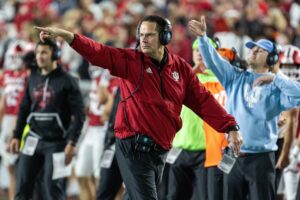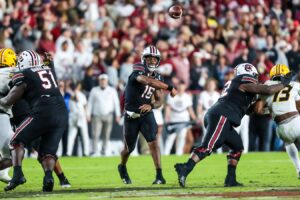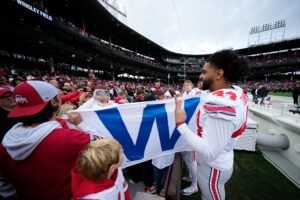FBC Mortgage Stadium, home of the UCF Knights football program, has been green-lit for its first major expansion project. Roth Tower, which houses the tower club, suites, press box, and broadcast booth, will be expanded. Matt Murschel from the Orlando Sentinel reported that the Florida Board of Governors has officially approved the project.
The Roth Tower expansion will be an $88 million project adding approximately 58,000 square feet to the tower. It will include 1,236 club seats, 34 loge boxes, 34 sky bays, 25 luxury suites, a new press box, and more. Currently, the project is in the design phase and is slated to begin construction after the 2024 season. Construction is expected to be completed by the 2026 season. When completed, the new tower will redefine the look of FBC Mortgage Stadium.
How Did UCF Pull This Off?
In Orange County, there is a fund called the Tourism Development Tax(TDT). The TDT is a tax that is collected from tourism-related things such as hotels. That money then gets allocated for projects that help bring in more tourism. UCF president Alex Cartwright and athletic director Terry Mohajir recognized that UCF athletics brings tourism to the area. They decided to apply for funds, despite some opposition. UCF’s application was for $176 million, which would cover the majority of their projects at or around FBC Mortgage Stadium.
UCF ended up getting allocated $90 million out of the tourism dollar surplus. The $90 million will be paid out over nine years., which was enough of a guarantee for UCF to secure $30 million in bonds and a $70 million bank loan. The stadium expansion should bring in around $2.4M in annual revenue to the school. The amount from the TDT is completely separate from the increased revenue UCF will receive as a member of the Big 12 Conference. The Knights will receive $18 million in 2023-24, $19 million in 2024-25, and a full media share in 2025-26 and beyond.
This Wasn’t the Original Plan
Athletic director Terry Mohajir helped create a stadium expansion plan. In the original plan, expanding Roth Tower was not part of it. Instead, the south endzone would have a new structure that would house offices, loge seating, and a new stadium club. However, it didn’t take long for reality to settle in and the plan was largely scrapped. Only McNamara Cove and its required practice field relocation carried over from the original Phase I/II.
A new plan was designed and that included expanding Roth Tower. Similar to the original plan, the projects at or around FBC Mortgage Stadium are broken up into phases. Phase I involves the creation of the Sharon and Marc Hagle Gateway, which will include the Taylor A. Gerring Football Center and the long-awaited McNamara Cove. Roth Tower is part of Phase II. Eventually, UCF will have a Phase III that will include renovations to the Wayne Dench Sports Center.
About FBC Mortgage Stadium
FBC Mortgage Stadium, originally known as Bright House Networks Stadium, opened in 2007 as part of a $60 million project. In 2005, UCF began planning the construction of an on-campus stadium with the hopes of a 2006 completion. The school had to push back construction on the stadium by a year due to legal hurdles and FBC Mortgage Stadium officially opened in 2007 with a capacity of 45,301.
FBC Mortgage Stadium has had a number of smaller improvement projects. In 2015 and expanded in 2017, UCF built the Carl Black and Gold Cabana that converted midfield sections on the visiting side to premium club seats, which lowered the seating to its current capacity of 44,206. The following season, a larger video board replaced the original. Last year, UCF replaced its stadium lighting with LED lights and added LED signage and video ribbons during the season.







